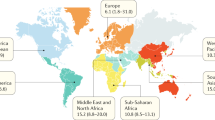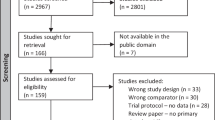Abstract
Objective: To assess nutritional intakes and subsequent growth of extremely low birth-weight (BW) infants.
Study Design: Chart review of 69 extremely low BW infants stratified into two groups by BW: ≤750 g (group 1; n=27) or 751 to 1000 g (group 2; n=42). Dietary intakes, weights, and head circumferences (HC) were collected through discharge and at 1 month postdischarge. The differences between goals and intakes were calculated weekly during hospitalization. Descriptive comparisons were made between growth parameters at birth, discharge, and follow-up.
Results: Total energy and protein deficits were inversely related to BW. Both groups exhibited extrauterine growth retardation while hospitalized. After discharge, the rates of weight gain and HC growth increased, leading to some growth recovery at follow-up.
Conclusions: Existing feeding methods resulted in sizeable deficits in energy and protein, particularly for the smallest infants. Changing current practices to limit these deficits is essential to improving postnatal growth.
This is a preview of subscription content, access via your institution
Access options
Subscribe to this journal
Receive 12 print issues and online access
$259.00 per year
only $21.58 per issue
Buy this article
- Purchase on Springer Link
- Instant access to full article PDF
Prices may be subject to local taxes which are calculated during checkout






Similar content being viewed by others
References
Sauer PJ, Dane HJ, Visser HK . Longitudinal studies on metabolic rate, heat loss, and energy cost of growth in low birth weight infants. Pediatr Res 1984;18(3):254–259.
Gomella TL, editor. Neonatology. Stamford, CT: Appleton & Lange; 1999.
Ehrenkranz RA, Younes N, Lemons JA, et al. Longitudinal growth of hospitalized very low birth weight infants. Pediatrics 1999;104(2 Part 1):280–289.
Embleton NE, Pang N, Cooke R . Postnatal malnutrition and growth retardation: an inevitable consequence of current recommendations in preterm infants? Pediatrics 2001;107(2):270–273.
Heird WC, Kashyap S . Protein and amino acid requirements. In: Polin RA, Fox WW, editors. Fetal and Neonatal Physiology, Vol. 1. Philadelphia, PA: WB Saunders; 1998. p. 654–665.
Denne SC, Karn CA, Ahlrichs JA, Dorotheo AR, Wang J, Liechty EA . Proteolysis and phenylalanine hydroxylation in response to parenteral nutrition in extremely premature and normal newborns. J Clin Invest 1996; 97:746–754.
Micheli JL, Schutz Y . Protein. In: Tsang RC, Lucas A, Uauy R, Zlotkin S, editors. Nutritional Needs of the Preterm Infant: Scientific Basis and Practical Guidelines. Baltimore, MD: Williams & Wilkins; 1993. p. 29–46.
American Academy of Pediatrics, Committee on Nutrition. Nutritional needs of preterm infants. In: Kleinman RE, editor. Pediatric Nutrition Handbook. Elk Grove, IL: American Academy of Pediatrics; 1998. p. 55–87.
NeoNova Nutrition Optimizer [computer program]. Version 4.5. Columbus, OH: Ross Products Division; 1999.
Thureen PJ, Hay Jr WW . Intravenous nutrition and postnatal growth of the micropremie. Clin Perinatol 2000;27(1):197–219.
Zlotkin SH, Bryan MH, Anderson GH . Intravenous nitrogen and energy intakes required to duplicate in utero nitrogen accretion in prematurely born human infants. J Pediatr 1981;99:115–120.
Lubchenco LO, Hansman C, Boyd E . Intrauterine growth in length and head circumference as estimated from live births at gestational ages from 26 to 42 weeks. Pediatrics 1966;37(3):403–408.
Battaglia FC, Lubchenco LO . A practical classification of newborn infants by weight and gestational age. J Pediatr 1967;71(2):159–163.
Guo SS, Roche AF, Chumlea WC, Casey PH, Moore WM . Growth in weight, recumbent length, and head circumference for preterm low-birth-weight infants during the first three years of life using gestation-adjusted ages. Early Hum Dev 1997;47:305–325.
Olsen IE, Richardson DK, Schmid CH, Ausman LM, Dwyer JT . Intersite differences in weight growth velocity of extremely premature infants. Pediatrics 2002;110(6):1125–1132.
Carlson SJ, Ziegler EE . Nutrient intakes and growth of very low birth weight infants. J Perinatol 1998;18(4):252–258.
Ziegler EE . Protein requirements of preterm infants. In: Fomon SJ, Heird WC, editors. Energy and Protein Needs During Infancy. New York, NY: Academic Press;1986. p. 69–85.
Ziegler EE . Protein in premature feeding. Nutrition 1994;10:69–71.
Lemons JA, Bauer CR, Oh W, et al. Very low birth weight outcomes of the National Institute of Child Health and Human Development neonatal research network, January 1995 through December 1996. NICHD Neonatal Research Network. Pediatrics 2001;107(1):e1.
Steward DK, Pridham KF . Growth patterns of extremely low-birth-weight hospitalized preterm infants. J Obstet Gynecol Neonatal Nurs 2002;31(1):57–65.
Lucas A, Morley R, Cole TJ . Randomised trial of early diet in preterm babies and later intelligence quotient. BMJ 1998;317:1481–1487.
Hack M, Breslau N, Weissman B, Aram D, Klein N, Borawski E . Effect of very low birth weight and subnormal head size on cognitive abilities at school age. N Engl J Med 1991;325:231–237.
Novak D . Nutrition in early life. How important is it? Clin Perinatol 2002;29(2):203–223.
Srinivasan M, Laychock SG, Hill DJ, Patel MS . Neonatal nutrition: metabolic programming of pancreatic islets and obesity. Exp Biol Med 2003;228(1):15–23.
Schulze K, Kashyap S, Ramakrishnan R . Cardiorespiratory costs of growth in low birth weight infants. J Dev Physiol 1993;19:85–90.
Author information
Authors and Affiliations
Rights and permissions
About this article
Cite this article
Ernst, K., Radmacher, P., Rafail, S. et al. Postnatal Malnutrition of Extremely Low Birth-Weight Infants With Catch-Up Growth Postdischarge. J Perinatol 23, 477–482 (2003). https://doi.org/10.1038/sj.jp.7210974
Published:
Issue Date:
DOI: https://doi.org/10.1038/sj.jp.7210974
This article is cited by
-
Zinc deficiency limiting head growth to discharge in extremely low gestational age infants with insufficient linear growth: a cohort study
Journal of Perinatology (2020)
-
Outcomes of early parenteral nutrition for premature infants
Journal of Perinatology (2010)
-
Caloric intake and weight gain in a neonatal intensive care unit
European Journal of Pediatrics (2010)
-
Both extrauterine and intrauterine growth restriction impair renal function in children born very preterm
Kidney International (2009)
-
Post-Discharge Nutrition of Preterm Infants
Journal of Perinatology (2005)



